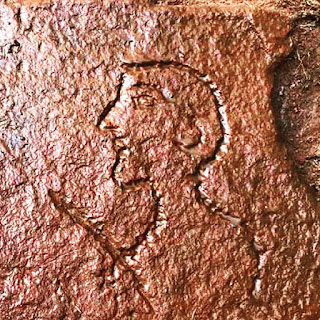RACY graffiti found at an ancient quarry near Hadrian's Wall in northern England is going to be immortalized in 3-D for future generations.
Archaeologists from the Britain's Newcastle University and Historic England are working to record the unique inscriptions carved into the walls of the quarry, which provided stone for Hadrian's Wall.
Other carvings at the quarry in Gelt Forest have helped experts date the rare inscriptions.
One inscription, for example, describes 'APRO ET MAXIMO CONSVLIBVS OFICINA MERCATI,' a reference to the consulate of Aper and Maximus.
This dates the inscription to 207 AD, a time when Hadrian’s Wall was undergoing a major renovation, according to Historic England.
"These inscriptions at Gelt Forest are probably the most important on the Hadrian’s Wall frontier," said Mike Collins, Historic England's inspector of ancient monuments for Hadrian's Wall.
While continued erosion has made it so you still can’t visit the area in person, a joint campaign between Historic England and Newcastle University is opening up a new way for ancient graffiti fans to take in the heritage landmark, dubbed the Written Rock of Gelt.
Archaeologists are in the process of rendering an ambitious 3-D record of the rare marks that will preserve the site like never before.
After carefully scaling the quarry walls with the help of ropes and pulleys, the plan is to give the surface of the quarry a cleaning.
Then experts will use structure-from-motion photogrammetry to record the etchings, which will be made publicly available via the 3-D modeling platform Sketchfab.
The current project involves a collaboration between Historic England and Newcastle University, with help from Natural England and the landowner, Brampton Parish Council.Then experts will use structure-from-motion photogrammetry to record the etchings, which will be made publicly available via the 3-D modeling platform Sketchfab.
Archaeologists will be using ropes from above the quarry to gain access to the Roman inscriptions and will then use laser scanning to get detailed recordings. From this record, the latest computer technology will allow a three-dimensional digital model of the rock surface to be prepared, safeguarding the inscriptions for study into the future.
Once the data is recorded, the public will be able to see the inscriptions up close for the first time in nearly 40 years.





No comments:
Post a Comment